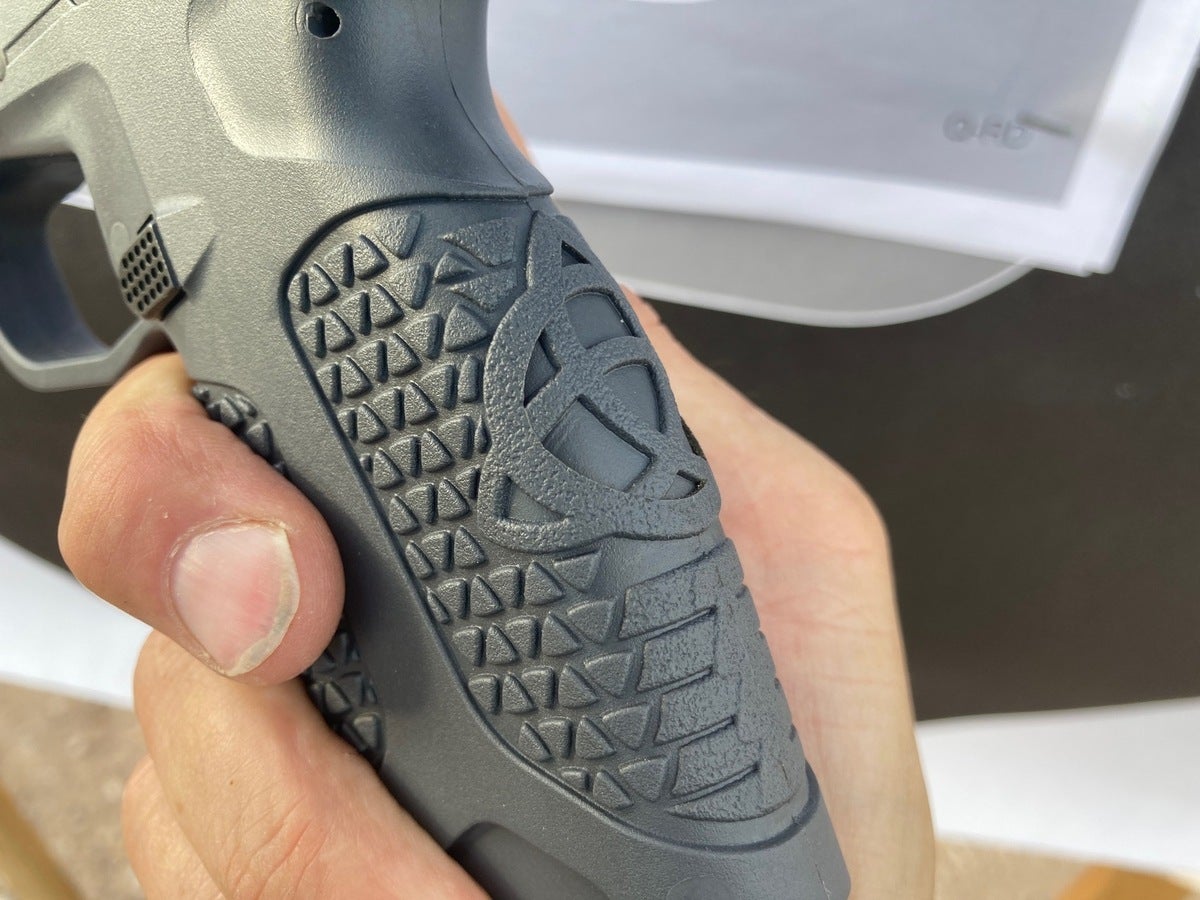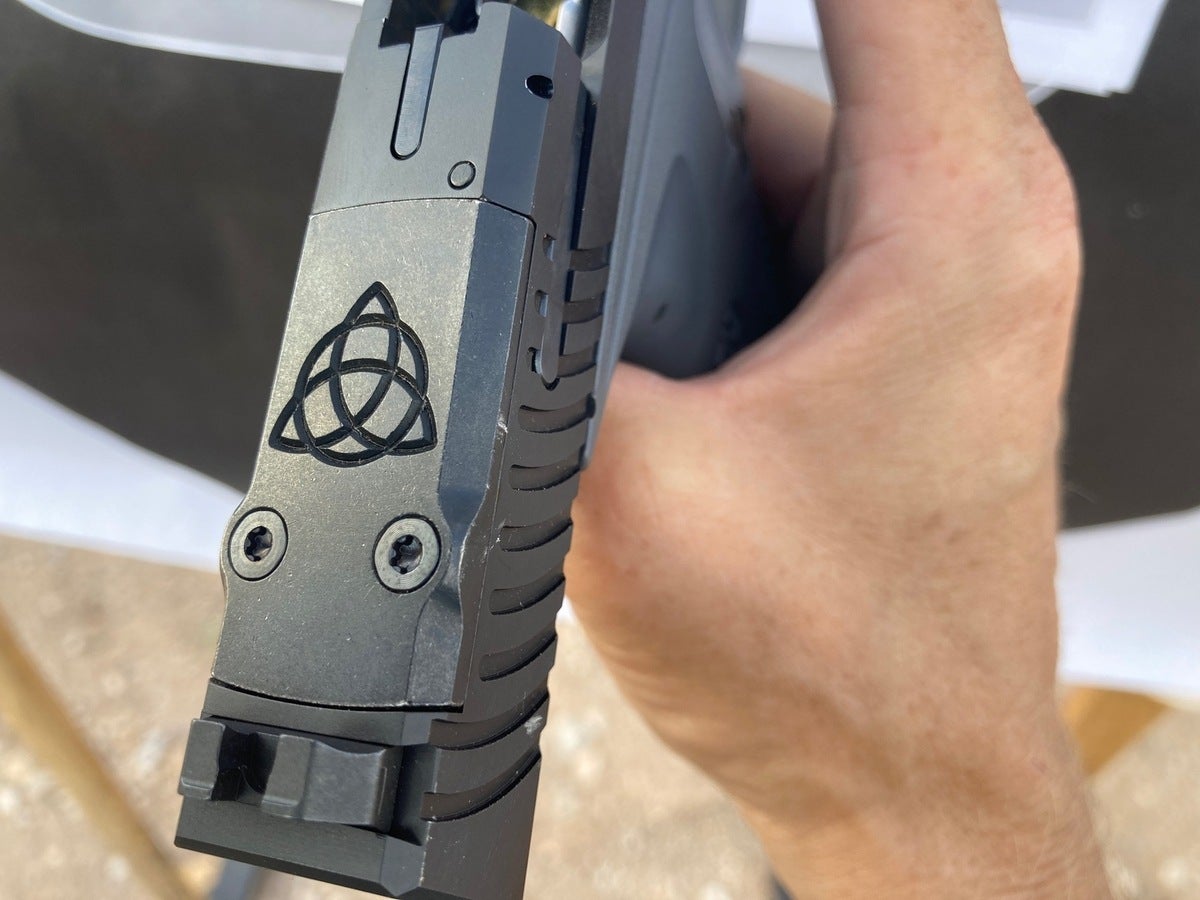AllOutdoor Review: Avidity Arms PD10 9mm Pistol – Built for Defense
Eve Flanigan 09.29.23
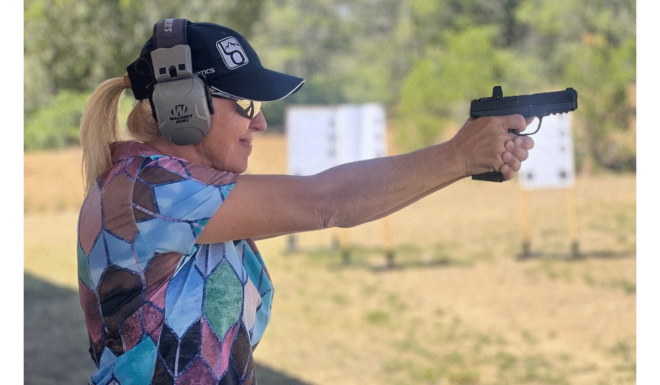
The PD10 pistol is a newly-released 9mm striker-fired handgun by Avidity Arms. Its first official media appearance was the 2023 Lucid Optics Ballistic Summit in Raton, New Mexico. I was one of the lucky media representatives to be in attendance and meet this new gun. Soon after, I had one in hand for a more in-depth trial.
Concealed Carry Coverage on AllOutdoor
- AllOutdoor Review: FN Reflex MRD 9mm – New King of Concealed Carry?
- AO Review: Springfield Armory Echelon 9mm – 500 Round Burn Down Test
- AllOutdoor Review – Kimber R7 Mako Striker-Fired 9mm Carry Gun
- 9mm vs. 45 ACP – What’s The Difference? Which One is Better?
Inspiration Behind the Avidity Arms PD10 9mm
For those not already familiar, the PD10 is the brainchild of former law enforcement officer and entrepreneur Rob Pincus, founder and owner of Avidity Arms. Pincus saw a gap in the market through his years of training defensive shooters around the country as part of another of his businesses, Personal Defense Network. People often train with a full-size gun for ease of ammo management and handling, while their everyday carry (EDC) gun is often much smaller and often passed over when choosing a gun for training. The PD10 is an attempt to combine the best of both models and help personal defenders stay responsibly armed in public spaces.
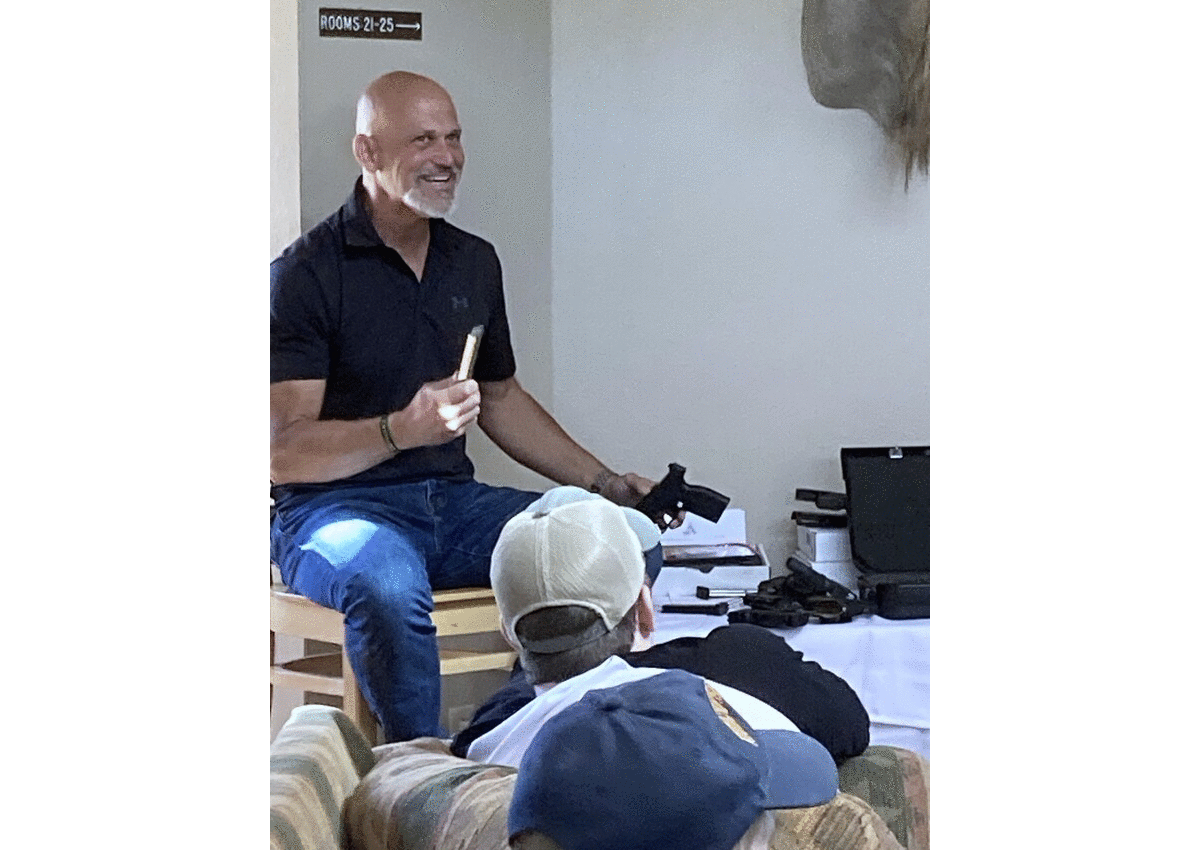
Pincus took the offset between what people train with and what people carry as a challenge. His design for the PD10 started, as many great ideas do, as a napkin drawing in the days following the 2012 mass murder at a school in Sandy Hook, Connecticut. Nearly 11 years later, his design is shipping to stores and distributors, having undergone numerous updates in the interim.
Specifications: Avidity Arms PD10 9mm
- Cartridge: 9mm
- Action: Striker-Fired
- Capacity: 10+1
- Barrel Length: 4″
- Frame: Polymer
- Overall Length: 6.94″
- Slide Width: 0.9″
- Width at Widest Point: 1″
- Weight: 18.8 ounces
- Isonite Coating on most metal parts
I didn’t ask, but we can safely assume the PD10 name refers to its purpose of personal defense and 10-round single stack magazines – making the mags a fine place to start describing the PD10. Those narrow mags make the grip, which is big enough for anyone’s hand, remarkably flat and concealable. The grip angle is such that all but the smallest of small adult hands can still operate the trigger. Two mags are included with purchase, but the gun will run a number of other brands’ 9mm 1911 mags. Pincus advises to test each non-Avidity magazine in the gun and not just assuming it will work.
There’s much more to the magazines, which have a thick baseplate for sure seating as well small appendages on the front/bottom of the plate for one-handed, emergency malfunction clearances. In my testing, the mags drop free from the gun when a double feed malfunction is not in place. That’s great news for speedy reloads.
The polymer frame/grip is uniquely and attractively textured with triangular bumps. An additional “patch” of texture is found toward the front of the frame. It’s not for recoil management, says Pincus, but to provide a tactile index point for correct trigger finger placement when not firing.
Concealment is in reach for many people with the PD10, thanks to its slim profile. The slide is just 0.9 inches wide, thinner than other popular micro-/sub-compacts. It’s so thin that current carry optics overlap the sides of the slide slightly. I didn’t notice the edges at all as I handled one outfitted with a red dot, but this could impede concealment as the edges of an optic could snag fabric. A perfect fix is in the works, though. Lucid Optics has a narrow carry optic, with their exclusive and highly visible blue dot, slated for production in late 2023.
Speaking of optic readiness, the first PD10s were manufactured with plain slides. However, production of those has ceased in favor of Shield pattern, carry-optic ready slides with a cover included for those who opt for iron sights only. This evolution is because “the market has fixed almost all my reasons for recommending against red dots in the past,” says Pincus.
AmeriGlo produces the iron sights for this gun, and those combat-oriented sights were previously designed in partnership with Rob Pincus and are available in the general AmeriGlo catalog. The rear blade is plain black; the front is a prominent dot that Pincus says “forces focus on the top, not the bottom, of the notch, for faster sight acquisition.” The sights aren’t noticeably tall, but there is an easy co-witness with an optic, making it unnecessary to change sights to achieve co-witness. In case it needs saying, there’s no need to remove the rear sight to install a red dot on the PD10.
Disassembly is a breeze and the process will be familiar to those accustomed to strikers guns. Pincus does note that the trigger should be in the forward position for reassembly. I found the takedown/reassembly process easy and efficient.
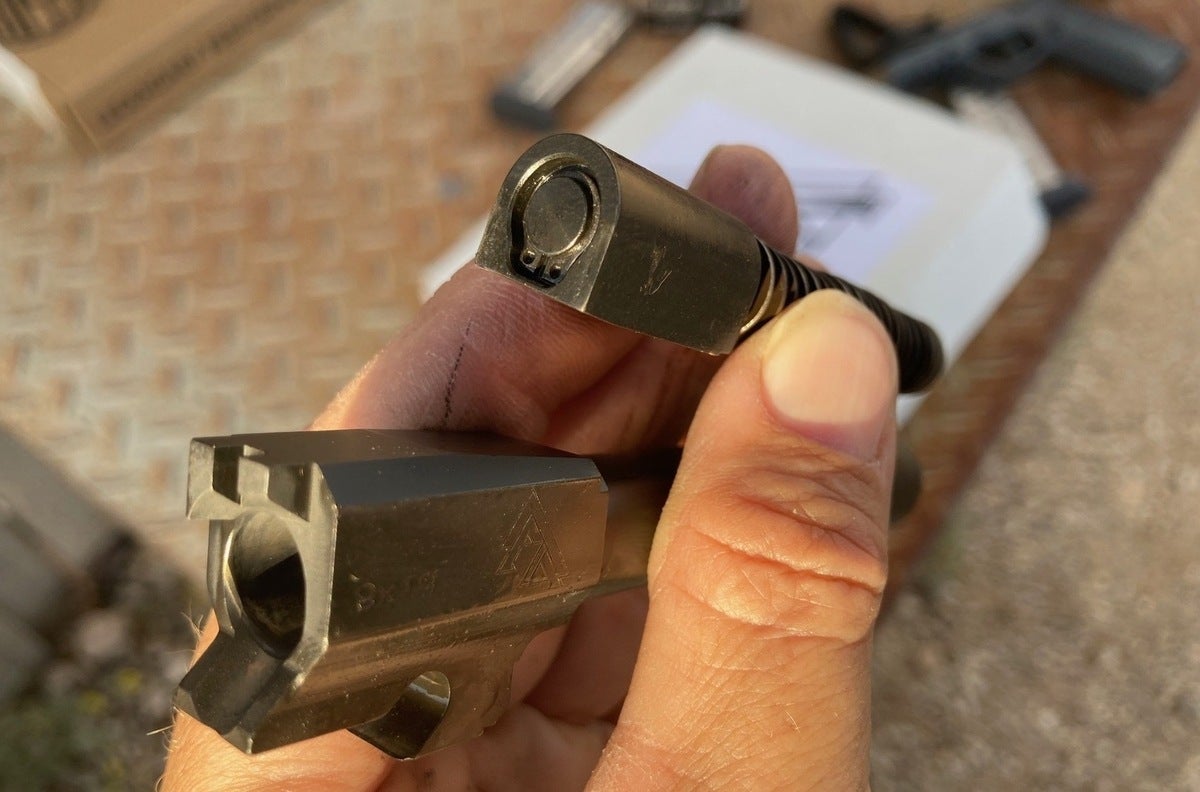
New PD10 owners have the luxury of not needing to wait the usual year or more before the holster market catches up with a new gun design. Numerous companies offer customized holsters for it including G Code, JM4 Tactical, and TacRig.
Shooting the PD10
This was a pretty unusual test in that I had a busy couple of weeks giving classes just after receiving a test model of the PD10. I put it in the hands of numerous shooters representing the extreme ends of the experience spectrum, from a first-time shooter to a longtime police firearms instructor, to a gunsmith who logs quite a lot of trigger time. It was interesting to see the same thing Pincus observed aloud at the Lucid Optics Summit when watching media people shoot his PD10s: experienced striker gun handlers feel for the wall and break, but the trigger is meant to be activated by a steady pull.
At the Lucid Optics Ballistic Summit, the PD10 enjoyed more than just its first foray into media events. It also became the first 9mm to produce a hit at the event’s traditional fundraiser/competition, contradition. Each gun gets five tries to strike the venerable white buffalo target at 1,123 yards. With Pincus on the trigger, the PD10 sccored the first 9mm hit in the history of the event. I think we can safely assume accuracy is built-in!
In this age of ammo conservation, so far I’ve only tested one brand in the PD10: Blazer Brass 115 grain FMJ. I wasn’t expecting pinpoint accuracy as this gun is made for sub-10 yard defensive engagements. I was kind of disappointed to see two five-shot groups that didn’t make a single hole from seven yards. Maybe it’s that I’m not accustomed to the trigger, or maybe it’s the ammo/barrel combo, but a 3″+ group is bigger than I was expecting in terms of accuracy. Loading the single stack mags must be done carefully. There was a little space left between some cartridges’ rims and rear of the mag in my first string of fire. Two failures to extract resulted. When the mags are loaded with care to fully seat the cartridges, no such problem occurs.
Pincus designed the slide lock on the PD10 to be just that: a lock, not a release. His design encourages racking from behind the ejection port for all typical needs: loading, unloading, and clearing malfunctions. The recoil spring is, in my opinion, on the light side of moderate in tension. My reference points for that scale the M&P9 Shield EZ on the light end of the tension spectrum and the M&P 1st Gen Shield on the tight end. I can release the slide with my thumb to load the gun, but it’s easier to do the racking motion on the PD10. The slide lock has a right-hand bias and is located on the left side of the frame.
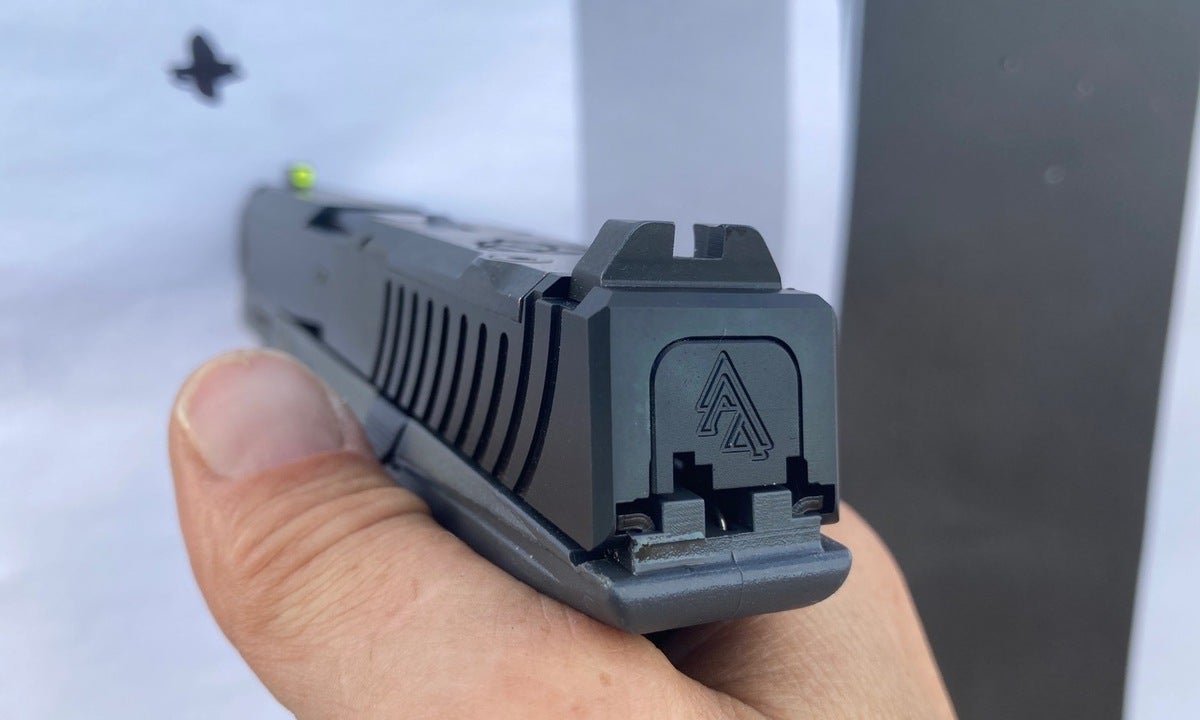
Magazines fall freely from the PD10 when released with the grip vertical to the ground, as I believe magazines should. They do this regardless of load status. I find the magazine release requires a moment of fairly intense pressure to do its job of letting go of magazines. It makes sense for an EDC gun to not have a light mag release to avoid unintentionally letting go of a mag. PD10s are primarily produced in gray with a black Isonite finish slide. Due to popular demand, black-frame models are now available too.
Conclusion – Final Thoughts
The PD10 can make a great choice for someone who isn’t fond of today’s micro-compacts or of getting their palm pinched when inserting a magazine. Its design integrates concealable size with a barrel and controls large enough for serious training. Training on the PD10 will prepare new pistol owners to handle both double- and single-action semiautos For the new shooter, it offers handy, consistent performance in a package that’s not too big and not too small.
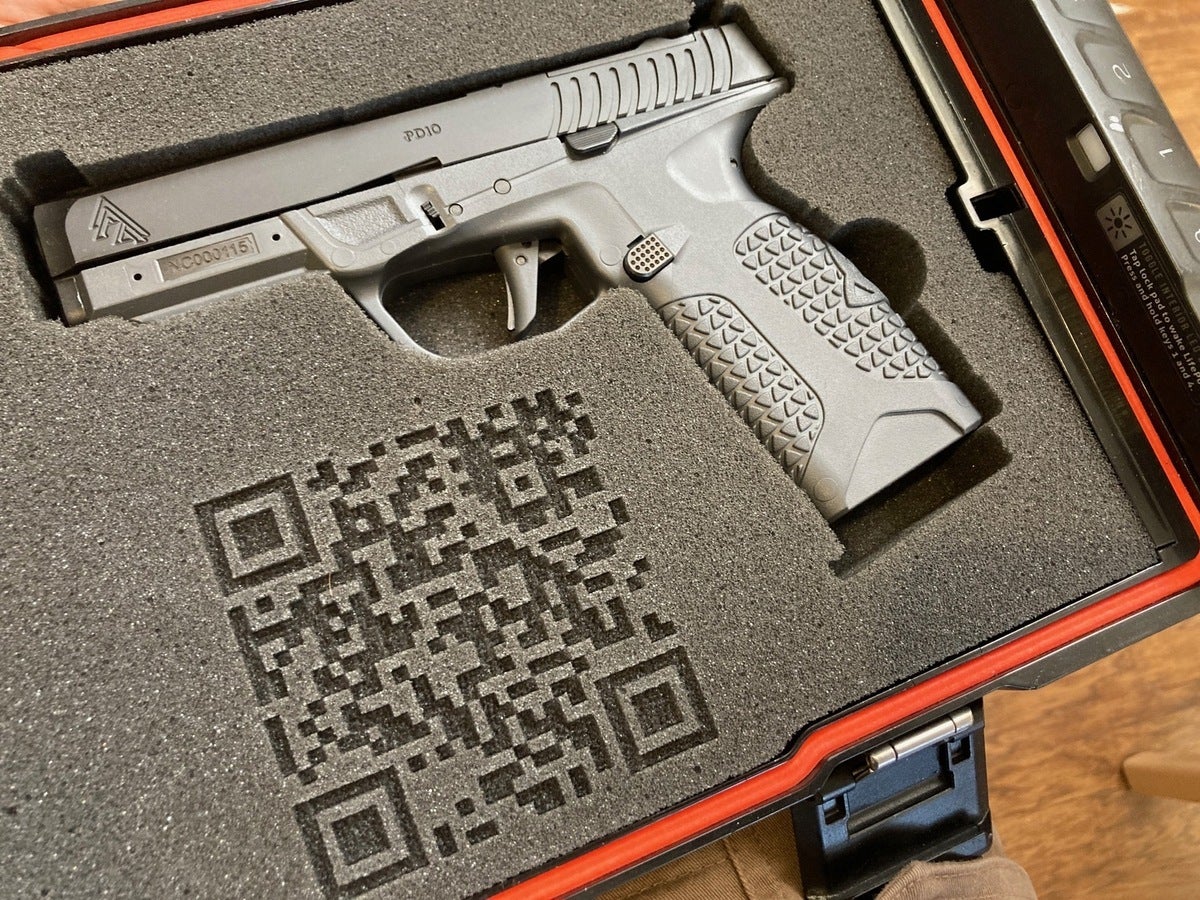
Current market price is around $575 – $595 and includes two magazines, a high-quality user manual, and some other educational inserts. Distribution is currently being handled by Davidson’s, where buyers can order direct to their local FFL as well as buying at gun stores.

